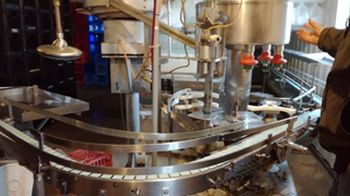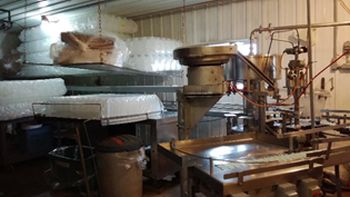Radiance dairy
Brookville Rd. Fairfield, Iowa
Radiance Dairy is an organic farm with its own processing line, which produces drinking milk (whole, 2% of fat content and skimmed milk), cream, yogurt and cheese.
They hold 80 Gersey cows on grazing. Owner have 300 hectares of land. Part of the land is used for pastures with perennial grasses (a mixture of field brome grass, orchard grass, timothy, ryegrass and clover). The rest of the land is allocated under the hay (50 hectares), organic soybeans, corn, wheat, which are grown and sold for the manufacture of food products.
In the priority are pastures to provide cows with grass and hay. If the grass on the pastures grows very quickly, it is used for hay. If the weather is dry, fields with hay are used for grazing. So, first owners plant pastures and fields under the hay, the rest is used for other crops for sale.
From the barn, in which the milking block, milk processing section and the refrigerating chamber are located, the alley is laid to the grassland. All pasture is divided into plots from 0.5 to 2 hectares (totally 60), which rotationally are being grazed.
Twice a day cows go to the barn for milking (6.00 and 21.00 for 2−3 hours.), and then go to the fresh plot.
All the time, cows are kept outdoors: 8 months they are grazing, and during 4 winter months they are on the fields (also rotationally), where the hay and bare hay is laid out. Animals consume harvested feed and at the same time fertilize the fields in a natural way.
The farm is serviced by 5 employees, including the farmer himself.
Feeds and feeding
The diet of cows is simple: fresh grass from pasture, hay and haylage (corn silage is not used). During milking cows are given 2−3 kg of crushed corn and extruded soy (organic). The number of the latter depends on the quality of the grass and hay. If there is a lot of protein in them, then no additional sources of protein are needed. If the worse quality, then are given no more than 230−250 g.
Corn silage can be used when cows are kept in pens equipped with fodder place. There is no fodder places on the pasture at Radiance Dairy.
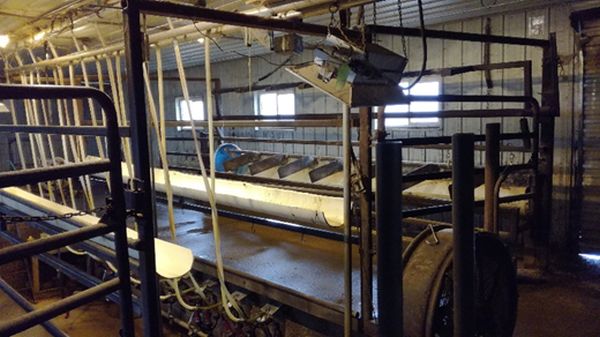
In the milking parlour during the milking cows are fed with ground corn and extruded soy.
Productivity, milk composition and cows' health
The daily productivity of cows ranges from 15 to 20 liters with high fat and protein content. On traditional farms, cows are used very intensively, reaching high productivity at the expense of concentrated feed. At Radiance Dairy cows consume grass, give less milk, but live longer. The oldest cow in the herd is now 15 years old.
Own processing
20 years ago, it was difficult to find a farm in Iowa that would process milk itself. Now there are more such farms.
From the cooling tank in the milking parlour, milk is pumped into the processing plant, which is located in the adjoining room.
Here the milk is separated (at 15 °C), pasteurized (62−63 °C), cooled to 7 °C, and goes to the production of drinking non-homogenized bottled milk (whole, 2% of fat content, skimmed milk), cream, thermostat yogurt and cheese.
|
|
|
| A line for filling bottles with milk and yogurt. | |
For the week, 8 thousand liters of milk are processed. Milk is made twice a week, once a week (on Fridays) cheese is made.
The milk can be stored in a cooler tank at a temperature close to 0 °C for 2−3 days before processing. Immediately after the bottling, the milk is delivered to the store or into the refrigerating chamber; thermostat yogurt ripens in a chamber with an adjustable temperature.
Milk is sold only through local grocery stores and 20 restaurants.
The shelf life of milk is 2 weeks.
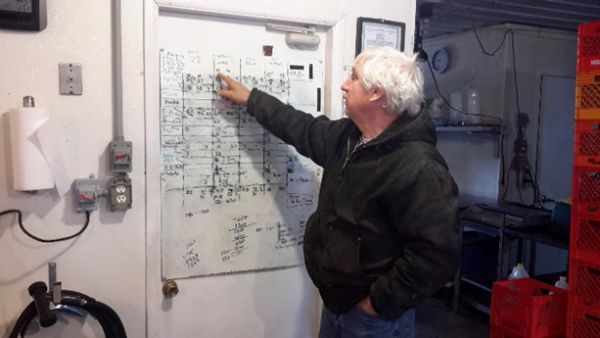
«"Automated” product delivery program», — the owner of the farm Frances Ticks jokes.
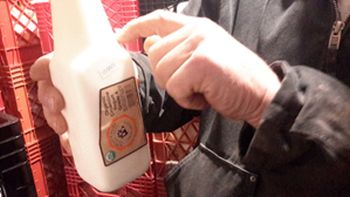 |
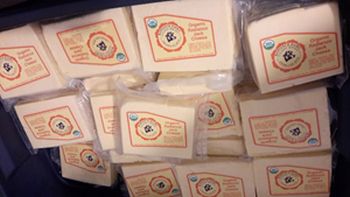 |
Consumer, added value and margin
The farm started in 1980 with 2 cows and the sales of raw milk. As the demand grew, it became more cows. The processing line was established when there were 40 cows.
Initially, the main consumers of products were adherents of transcendental meditation, who organized the college nearby. Subsequently, products gained popularity among other local people.
Organic milk is twice as expensive as traditional: 5 versus 2.5 dollars. per gallon.
The products are completely sold, from the shops there were never returns of products. There are seasonal variations and when there is an excess of milk, it is passed into shelters for the poor.
What should be paid attention to: low production costs and high added value of the product allow to receive a high margin.
Main features of added value:
- Organicity.
- Cows consume grass — a healthier product.
- Non-homogenization (the layer of fat formed on top of the milk).
- Jerseys' milk contains more solids and even after dehydration has more protein.
- The product is local and fresh — consumer likes it much.
ORGANIC from USDA (Ministry of Foreign Affairs of the United States)
The procedure for obtaining the status of organic products is complicated. There are a number of requirements for:
- the soil;
- growing crops;
- animals;
- processing
All these requirements must be met by the farm. Once a month, samples of all products are sent to a laboratory study. Certified by a privately held NICS (Nature's International Certification Service), accredited by the Ministry of Agriculture.
In the US, demand for organic products is increasing — up to 15% per year. This is a good opportunity for many manufacturers to become organic.
